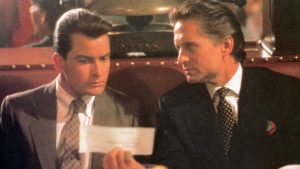When I entered the investing business in 1998, I was an enthusiast on markets. I used the write a weekly column in the Columbia Business School newspaper that often depicted the macro themes of the day, usually with a humorous spin and a cartoon drawing or two. On Thursday nights, I would devour publications such as The Economist (which I still read) in search of inspiration for my articles that were due by Monday. The positive response that I received on my column at Columbia, combined with my experience of growing up in Brazil during the hyper-inflation years of the 1980s, motivated me to become a macro enthusiast. Those were the peak years in terms of my enthusiasm for macro topics. Today I am more of a devotee of Charlie Munger, who says, “micro is what we do. Macro is what we deal with.”
When I got an internship at the mutual fund company Dreyfus Corporation in 1998, they put me in the Emerging Markets group, because that’s where they figured I could add the most value. At the time Brazil was going through a privatization program that included the breakup of Telebras, the state-owned telecommunication services company, into something like twelve different companies that were all going to trade in the stock market. Some were landline companies while others were wireless plays – and I favored the wireless plays. But when I presented my work to the Dreyfus team, one of the portfolio managers commented that selecting among the stocks was not relevant. The bigger question was if Brazil was a buy or not.
So I went back and did a deep dive on the macro and political outlook for Brazil, and to this manager’s disappointment, I came back with the opinion that Brazil was not a buy. Brazil was hot in those days, and Brazilian bankers were becoming more prominent on Wall Street. Recall that 1998 was a World Cup year, and Brazil played through the finals, when they lost to France. I recall watching a couple of the games from the NY office of the Brazilian investment bank Garantia, which was acquired by Credit Suisse that same year. Anyway, it was a four-month internship and there was still a month left, so the director of research asked me if I had any ideas or wishes in terms of what to work on next. My answer was that I wanted to work with the US research team, so they assigned me to do an evaluation of the information technology space – and that decision would change my life by more than I appreciated then.
Why have I told this story? Because in my early days as a macro enthusiast, I was a big fan of macro traders like George Soros, Michael Steinhardt, Julian Robertson, and Paul Tudor Jones. Jack Schwager’s book, Market Wizards: Interview with Top Traders (2006), profiles several of these giants. But experience then taught me that just because some people have been successful at something doesn’t mean that it is something worth doing. Time and close observation have shown me that it is extremely difficult, if not impossible, for any macro trader to match the sort of returns that outstanding companies deliver over the long term. I am sure there are exceptions, but most macro traders I have followed have stumbled badly in their careers, while most great stock pickers who morphed into macro traders, stumbled as well. Even the venerable Timothy Rowe Price went through a period in his career when he got caught up in a macro call (inspired by inflation, of all things), only to regret it later and return to investing in quality growth stocks for the long run. T. Rowe’s biography (2019), by retired analyst Cornelius Bond, tells his story well and was an inspiring read.
One read that wasn’t as inspiring, even though it was still interesting, was Edward Chancellor’s new book, The Price of Time: The Real Story of Interest (2022). I enjoyed Chancellor’s earlier book, Devil Take the Hindmost: A History of Financial Speculation (1999), but that was a long time ago, when making macro calls was my thing. The Economist ran a scathing review of Chancellor’s 2022 book in its August 11 issue, where they concluded that he is basically a liquidationist who blames the U.S. Fed for almost any ill he can identify in the world. I was prepared for this, so was not disappointed by Chancellor’s liquidationist rants, but when he basically dismisses John Maynard Keynes as a fool for not predicting the great depression – that’s when he crossed my line.
In Chapter 6 of his book Chancellor tells the story of when Keynes visited the bearish Swiss banker Felix Somary, who had been publicly warning of an impending crash in 1928. This same Swiss banker left a record of his conversation with Keynes, which Chancellor reproduces: “I have never seen such stormy weather gathering,’ I said. But speculation in securities passionately interested Keynes, and despite my obvious refusal to answer, he repeatedly asked questions about which shares on continental markets were attractive purchases. If Keynes failed to heed this warning it was because he’d enjoyed no previous success in applying interest rates and other macroeconomic inputs to his own investment process and had given up on what he called ‘credit cycle investment’.” Then Chancellor ends the paragraph by stating that between 1927 and the end of 1929, Keynes’s personal fortune declined by more than three-quarters due to use of portfolio leverage and “his failure as an economist to anticipate Somary’s gathering storm clouds.”
It is true that Keynes experienced heavy losses in the 1929 crash, and it is also true that he failed to anticipate what the Swiss banker warned him about, but the way Chancellor tells the story leaves the impression that the best thing to do is listen to what Swiss bankers have to say about what the market will do next. I have never seen Chancellor’s track record as an investor, but his LinkedIn page lists him as a freelance market historian. Not just in Chapter 6, but throughout the book, Chancellor takes multiple jabs at Maynard Keynes, as if to leave the impression that he was but a shallow Kool-Aid drinker, which couldn’t be further from the truth.
Many great books have been written by and about Keynes, and I consider him one of the most amazing thinkers and investors of all time. In his biography, Keynes: The Return of the Master (2009), Robert Skidelsky debunks the common belief that Keynes failed to predict the slump, or that he was wiped out by it. Indeed, Keynes suffered a dramatic hit to his net worth, but that is only because he maintained his conviction in the long term and refused to be shaken out of the companies that he believed would be worth much more in the future. In fact, Keynes was unrepentant at being burned by the crash, and he would die a very wealthy man as a result.
What Chancellor does not reveal in his book, because it doesn’t support his thesis and his disparaging views of Keynesian thought, is that despite taking a drawdown of nearly 80% in the crash, Keynes’ personal net worth grew to £500,000 by 1936, which equates to over $40 million in today’s money. From the lows, his net worth appreciated 23 times, while the US stock market only tripled, and the London stock market went nowhere. The portfolios he managed for college endowments and insurance companies also significantly outperformed the indices, and his audited, long term track record as a professional investor, is nothing short of fantastic.
The book Concentrated Investing (2016), which was co-authored by one of my professors at Columbia Business School, shares these numbers. The Chest Fund, which Keynes managed for King’s College from 1921 through his passing in 1946, grew by nearly five-fold during a period that encompassed the 1929 crash, the Great Depression, and World War II. The fund experienced drawdowns of 32% in 1930, 25% in 1931, and 40% in 1938, but it outperformed dramatically on the other side of the “market crashes,” such that the annualized return for the 18-year period was over 9%, which compares with a negative return for the overall market.
So needless to say, I was disappointed by Chancellor’s portrayal of my hero. Even if Chancellor is a well-read and brilliant market historian, his book is angry, heavily biased, and dangerously misleading. It is his sort of thinking, that one must “get out before a crash,” that keeps so many people from achieving their dreams in the stock market.
Here I will end with one of my favorite Keynes quotes from 1938, which I extracted from Skidelsky’s wonderful book: “I find no shame at being found still owning a share when the bottom of the market comes. I do not think it is the business of . . . [a serious] investor to cut and run on a falling market . . . I would go much further than that. I should say that it is from time to time the duty of a serious investor to accept the depreciation of his holdings with equanimity and without reproaching himself. Any other policy is anti-social, destructive of confidence, and incompatible with the working of the economic system. An investor . . . should be aiming primarily at long-period results and should be solely judged by these.” Amen!










